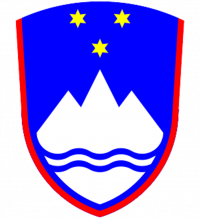On April 7, 1848, a group of students led by the liberal nationalist activist and poet Lovro Toman raised the first Slovenian flag in Ljubljana. The Austrian authorities adopted it as the official flag of Carniola, despite strong opposition from Germany. The Austrian government generally suppressed non-German emblems throughout the empire, but this regional recognition was an exception.
Fearing that flags with more than three colors could provoke an uprising, the Austrian central government ordered that regional flags and the empire flag be limited to two colors each. Therefore, the Slovenian people were very happy when the Carniolan tricolor-white, blue, and red-was officially adopted as the symbol of the United Slovenia. At some point in the second half of the nineteenth century, the Slovenian tricolor supplanted all other national symbols in importance.

Even after Slovenia became part of Yugoslavia with a flag with blue at the top, the flag with its bright colors was still easily recognizable. Although it was banned and its users were punished by the fascist government, it was used by the Slovenes of the Julian March, who were conquered by Italy in the interwar period. The coat of arms of Slovenia, designed by Marko Poganik, was officially adopted after the country declared its freedom from Yugoslavia. On June 27, 1991, after many months of discussions about the coat of arms of the new republic, the flag was chosen.






